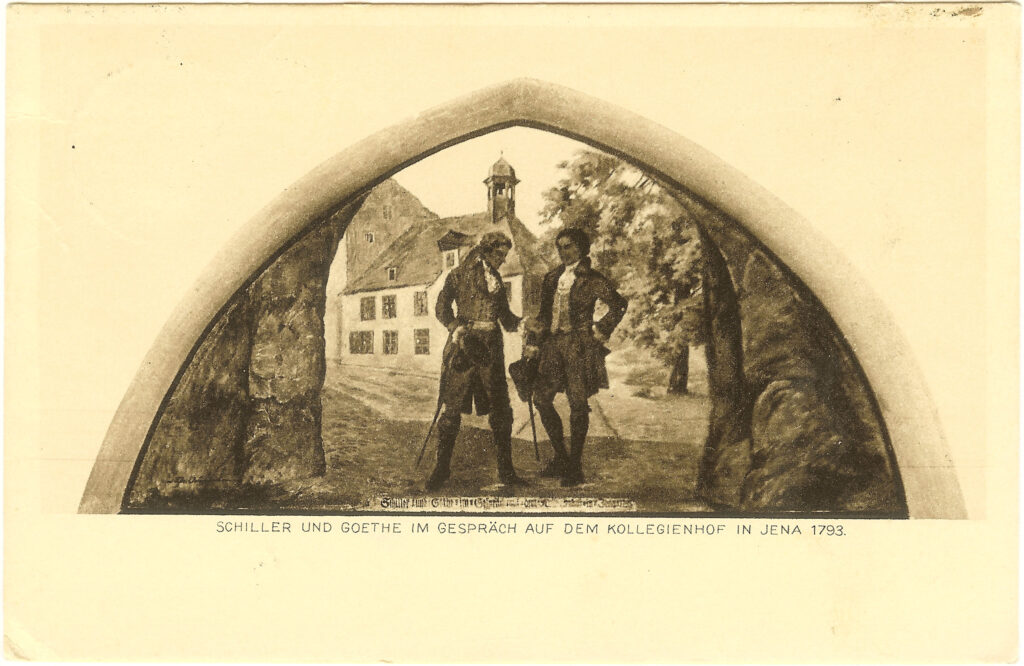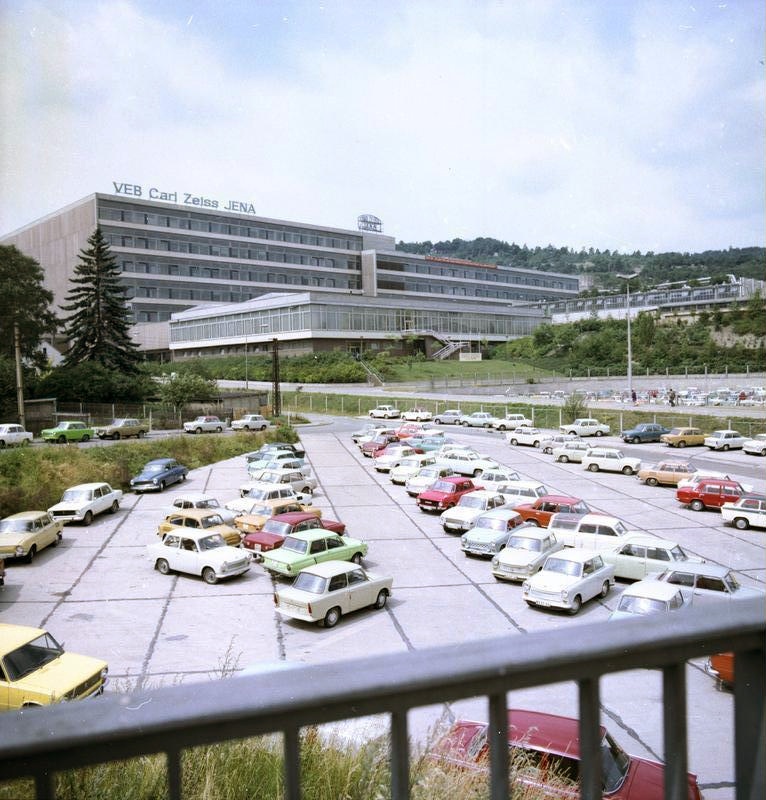Jena is a city in Germany with a population of around 110.000 people. Together with Erfurt and Weimar it forms the central metropolitan area of Thuringia with approximately 500.000 inhabitants.
Jena’s unique significance lies in its dual legacy:
- Philosophically and aesthetically, it was the cradle of German Idealism and Romanticism, shaping modern ideas of self, freedom, and art.
- Scientifically, it became a world leader in optics, thanks to the synergy of Zeiss, Abbe, and Schott.
Find out more about Jena below or get information on travel, accommodation, and things to see in the area here.
(Late 18th – Early 19th Century)
Jena in Philosophy and Aesthetics
Jena was a hub of German Idealism and Romanticism around 1785–1806, a golden era for aesthetics and philosophy:
Friedrich Schiller, a poet, philosopher, and dramatist, taught at the University of Jena and developed key ideas about aesthetics, freedom, and the moral role of art.
- His ideas on aesthetics are also reflected in some of his poems: “Die Künstler”(The Artists), “Die Götter Griechenlandes” (The Gods of Greece)
- Find his “Letters Upon The Aesthetic Education of Man” here
Johann Gottlieb Fichte, Friedrich Wilhelm Joseph Schelling, and later Georg Wilhelm Friedrich Hegel all taught or studied in Jena, making it a center of German Idealist philosophy.
The Jena Romantics, including Novalis, the Schlegel brothers, and Caroline Schlegel-Schelling, lived and worked there, blending philosophy, poetry, and early psychology.
The aesthetic theories emerging from Jena emphasized the unity of art and nature, subjective experience, and art as a form of knowledge.
(19th Century – Present)
Jena in Optics and Science
Jena gained international importance in optics, thanks to a collaboration between science, craftsmanship, and industrial vision:
Carl Zeiss (1816–1888) founded a precision optics workshop in Jena in 1846. He focused on making high-quality microscopes.
Ernst Abbe, a physicist and mathematician, joined Zeiss in the 1860s and revolutionized optical theory, establishing the Abbe sine condition and improving lens design with scientific rigor.
Otto Schott, a chemist, developed new types of optical glass that allowed more precise instruments. He co-founded Schott AG.
This led to Jena becoming a global leader in optical instruments, giving rise to Carl Zeiss AG, a company still famous today in the fields of microscopy, camera lenses, and medical devices.
(Present)
Jena Today
Jena remains a center for philosophy, cultural studies, and optical sciences through its Friedrich Schiller University and high-tech research institutions.
The interplay of science and the humanities is still a key theme in Jena’s academic identity.




